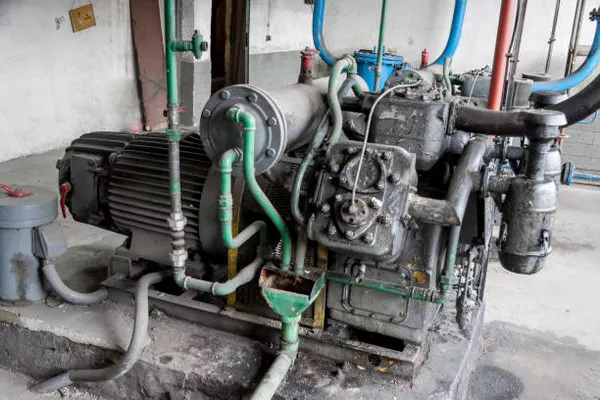In times of emergencies or when operating in remote locations, a reliable power source becomes indispensable. A 10,000-watt generator stands as a robust solution, providing substantial power output to cater to various needs. Understanding the capabilities of such a generator and the appliances it can run is crucial for optimal utilization. In this article, we delve into what a 10,000-watt generator can power, exploring its versatility across different settings and scenarios.
Understanding the Capacity
Before delving into the specifics of what a 10,000-watt generator can power, it’s essential to grasp its capacity. This type of generator typically produces 10,000 watts of continuous power, with the capacity to surge higher for short durations. This power output is substantial, making it suitable for both residential and commercial applications.
Household Appliances
One of the primary uses of a 10,000-watt generator is to power household appliances during power outages. Here’s a breakdown of common appliances and their wattage requirements:
Refrigerators (600-800 watts): Refrigerators are essential for preserving food during outages. A 10,000-watt generator can comfortably power multiple refrigerators simultaneously, ensuring food safety.
Freezers (500-700 watts): Similar to refrigerators, freezers are vital for storing perishable items. A 10,000-watt generator can power several freezers, allowing for extended food storage.
Lights (60-100 watts per bulb): Lighting is crucial for visibility and safety. A 10,000-watt generator can power numerous light fixtures throughout a home, including both LED and incandescent bulbs.
Televisions (100-400 watts): Entertainment remains essential, even during emergencies. A 10,000-watt generator can easily power multiple televisions, providing occupants with access to news updates and entertainment.
Microwaves (700-1,200 watts): Microwaves are convenient for quick meal preparation. A 10,000-watt generator can power multiple microwaves simultaneously, facilitating cooking needs.
Heating and Cooling Systems (1,000-5,000 watts): HVAC systems consume substantial power, especially during extreme temperatures. While a 10,000-watt generator may not power an entire HVAC system, it can operate essential components such as fans or smaller heaters.
Computers and Electronics (100-1,000 watts): In today’s digital age, computers and electronics are ubiquitous. A 10,000-watt generator can easily handle the power requirements of multiple devices, including desktop computers, laptops, and chargers.
Sump Pumps (600-1,500 watts): Sump pumps are critical for preventing basement flooding, particularly during heavy rainfall. A 10,000-watt generator can power sump pumps, safeguarding homes from water damage.
Commercial and Construction Equipment
Beyond residential applications, a 10,000-watt generator finds extensive use in commercial and construction settings. Here are some examples of equipment it can power:
Power Tools (500-2,000 watts): Construction sites rely heavily on power tools for various tasks. A 10,000-watt generator can power multiple power tools simultaneously, enhancing productivity on-site.
Air Compressors (1,000-2,500 watts): Air compressors are integral to many construction and industrial applications. A 10,000-watt generator can provide sufficient power to operate air compressors, facilitating pneumatic tool usage.
Welders (3,000-10,000 watts): Welding equipment requires substantial power, especially for heavy-duty applications. A 10,000-watt generator can power most welding machines, enabling welding operations in remote locations or during power outages.
Industrial Machinery (varies): Various types of industrial machinery have differing power requirements. While a 10,000-watt generator may not suffice for all industrial equipment, it can power smaller machines or serve as a temporary backup power source.
Outdoor and Recreational Activities
In addition to emergency backup and commercial use, a 10,000-watt generator enhances outdoor and recreational experiences. Here are some examples:
RVs and Campers: Many RVs and campers come equipped with generators to provide electricity while on the road or at campsites. A 10,000-watt generator can power all onboard appliances and electronics, including air conditioning units, refrigerators, and entertainment systems.
Outdoor Events: Outdoor events such as concerts, festivals, and markets often require temporary power sources. A 10,000-watt generator can supply electricity for lighting, sound systems, food stalls, and other event infrastructure.
Tailgating: Tailgating before sporting events or concerts is a popular pastime for many enthusiasts. A 10,000-watt generator can power grills, coolers, TVs, and other tailgating essentials, enhancing the experience for participants.
Camping: While traditional camping emphasizes disconnecting from modern amenities, some campers prefer to bring along generators for added comfort and convenience. A 10,000-watt generator can power campsite essentials such as lights, cooking appliances, and electronic devices.
FAQs
1. Can a 10,000-watt generator power an entire house?
While a 10,000-watt generator can power many essential appliances in a house simultaneously, it may not be sufficient to run an entire household, especially if the home has high-power-consuming systems like central air conditioning or electric heating. However, with careful management of power usage and prioritizing critical appliances, a 10,000-watt generator can provide significant backup power during outages.
2. How long will a 10,000-watt generator run on a full tank of gas?
The runtime of a 10,000-watt generator on a full tank of gas varies depending on factors such as the generator’s fuel efficiency, load capacity, and the size of the fuel tank. Generally, a 10,000-watt generator can run for approximately 8 to 12 hours on a full tank of gas under typical load conditions. However, it’s essential to consult the generator’s specifications and perform regular maintenance to ensure optimal performance and fuel efficiency.
3. Can a 10,000-watt generator be used indoors?
No, it is not safe to operate a 10,000-watt generator indoors due to the risk of carbon monoxide poisoning. Generators emit carbon monoxide, a colorless and odorless gas that can be lethal if inhaled in high concentrations. Always operate generators outdoors in well-ventilated areas, away from doors, windows, and vents, to prevent the buildup of carbon monoxide gas and ensure safety for occupants.
Conclusion:
A 10,000-watt generator offers substantial power output, making it a versatile solution for a wide range of applications, from residential backup power to commercial and industrial use. Understanding its capabilities and limitations empowers users to make informed decisions regarding power management during emergencies or off-grid scenarios. By selecting the right appliances and employing energy-efficient practices, a 10 kW generator can provide reliable electricity when it’s needed most.

